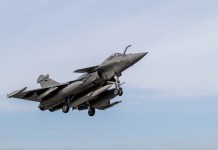India-UAE underwater train connecting Mumbai to Fujairah might sound exciting, but how realistic is the model? UAE’s National Advisor Bureau Limited is exploring the possibility of Mumbai-Fujairah underwater train and connecting India to the UAE, but according to a news report, this might just be an imaginative concept.
As reported by Indian media earlier, the UAE’s National Advisor Bureau is looking at the possibility of connecting Mumbai to the city of Fujairah in the UAE through an underwater rail network. As mentioned in Khaleej Times, not only will this mode transport passengers, it could also be used to exchange goods and oil exports as mentioned by the bureau’s director and chief consultant Abdulla Alshehhi during the UAE-India Conclave in Abu Dhabi.
The total length of the rail network will be less than 2,000 km but the underwater part could pose unique challenges and a lot of aspects would need consideration. “We will do a feasibility study of the project. This is a concept but a cool project to look at,” he added.
The project that aims to boost bilateral trade will benefit UAE, India and others in the region, Alshehhi mentioned. Meanwhile, India is already working on ambitious transport projects such as the bullet train and Hyperloop. Will this project see the light of day remains to be seen.
India-UAE Underwater Train: True or False
An Indian government source told Quint that there have been reports of an underwater rail network in the media, but these are “assessment”. He said that the MEA has “no information of this.”
The underwater railway network between India and the UAE is actually a concept proposed by a UAE-based National Advisor Bureau Limited (NABL). The company’s Managing Director, Abdullah Alshehhi said that the conceptual rail network will not only cater passengers but will also be looking at transporting oil and other goods.
NABL has said the network can be used for transporting tourists, workers and other passengers between India and Gulf nations. The network can also be used to transport excess water from Narmada river via the water pipeline.




